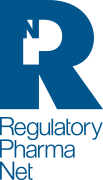According to GVP (Good Pharmacovigilance Practices) Module VI, MAHs are required to conduct actively global literature searches at least once a week through systematic reviews and monitoring of major reference databases.
This frequent and systematic approach ensures MAHs to be informed of any suspected adverse reactions reported in medical literature. The pivotal moment, known as “Day Zero” is the date on which a potential adverse drug reaction is identified from medical literature or other sources, starting the clock for regulatory submission of individual case safety reports (ICSRs).
Beyond digital and online sources, MAHs should also monitor and review abstracts from scientific meetings, and notably, publications in local medical journals—both digital and in prints in countries where medicinal products have a marketing authorisation.
As indicated in the EMA Q&As, For ICSRs, described in the medical literature containing the four minimum criteria, the clock starts (Day Zero) on the day when the physical/paper local journal is received by the organisation/Marketing authorisation holder/Applicant.
When information comes simultaneously from both paper and digital sources, the first source received sets Day Zero. This ensures efficiency and promptness in reporting, irrespective of the medium.
In conclusion, understanding and clarifying the definition of “Day Zero”, especially in the context of paper journals, is crucial for MAHs to fulfill their regulatory duties effectively, ensure timely and compliant pharmacovigilance activities. By incorporating reports from both digital and print media into their pharmacovigilance practices, MAHs enhance their capacity to safeguard public health through meticulous monitoring and reporting of adverse drug reactions.
RPN is available to support MAHs for the check of both global and local literature and is able to provide any further update and full support for Pharmacovigilance activities.




